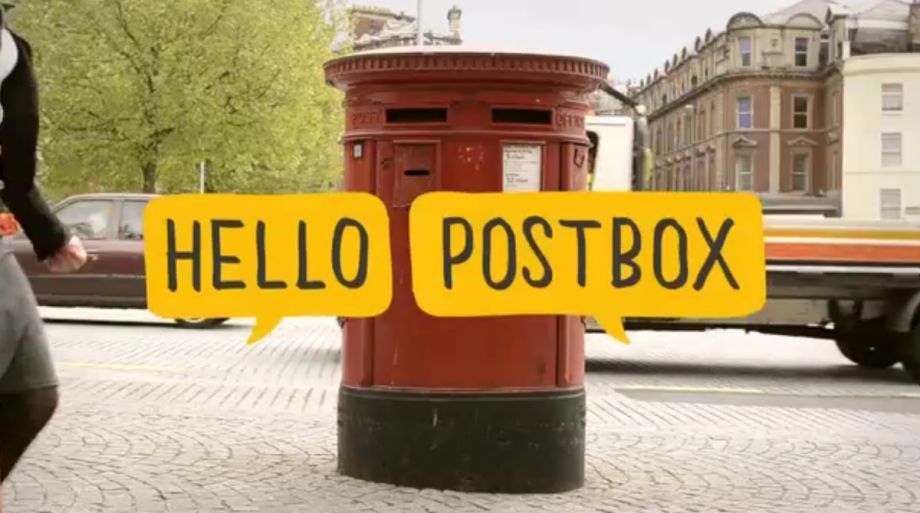Imagine a city where, as you walk along the sidewalk, you can see the moving shadows of pedestrians who preceded you. A city where you can exchange text messages with lampposts, where poems appear in light on waterways, and pipes emit music.
Such urban whimsy would constitute a “playable city,” according to the UK-based organization Watershed. All of the above concepts were either winners or finalists in Watershed’s Playable City Award, now in its second year. (This year’s winner, the shadow project, was announced earlier this month.) The goal of the award is to encourage use of technology to foster an engaging and playful urban environment. According to Watershed’s website, “A Playable City is a city where people, hospitality and openness are key, enabling its residents and visitors to reconfigure and rewrite its services, places and stories.”
The playable city was explicitly conceived as a counterpoint to the “smart city,” and may be part of a larger backlash. In the dream of the smart city, sensors would collect data in order to solve problems and optimize efficiency. Traffic would flow unimpeded, buildings would automatically save energy, and crime would be anticipated and thwarted. Anthony Townsend, in last year’s book Smart Cities, posed some pointed questions: Would smart cities relinquish too much control over citizen data to government or corporations? Would they be, in the words of one chapter title, “Buggy, Brittle, and Bugged”? More recently, Adam Greenfield published a blistering pamphlet called “Against the Smart City,” in which he argues that the concept’s corporate architects prioritize convenience and “frictionlessness” at the expense of citizen participation and vitality. In short, many are coming to see smart cities as ominous, lifeless places, without the spontaneity that gives cities their character.
According to Verity McIntosh, producer of the Playable City Award, Watershed is “not anti-smart city,” but in 2012, they began to try to think beyond “efficiency and utilitarianism” as the ultimate priorities. “If we’re all here, why are we here and are we aware of what we want cities to be? We’re trying to bring that extra nuance in so we don’t forget to have that kind of conversation before we transform our city spaces.”
The winner of last year’s award, “Hello Lamp Post,” devised a system enabling Bristol residents to send text messages to inanimate objects throughout the city — not just lampposts but also park benches, billboards, and so on. The objects would reply with responses such as, “Hello human. How bad is your handwriting?” Or, “When was the last time you wrote a letter?” Then, as answers accumulated, the objects would refer back to them: A lamppost might tell you, “Somebody said to me my handwriting is like a spider that crawled through ink.” Over the course of eight weeks last summer, more than 25,000 text messages were sent as part of this project, McIntosh said. This year’s winner, “Shadowing,” will use infrared cameras to capture images of moving shadows on Bristol’s sidewalks, and then project them back on the ground to mingle with the figures and shadows that pass by later.
“Does it feel like you’re in the company of imaginary friends or surrounded by traces of history of people who are gone?” McIntosh said. “We’re hoping to engineer in those delightful moments.” (The technical details are currently being hammered out.)
McIntosh says they have heard from cities throughout the world, expressing interest in the idea and in adapting specific projects. Austin, Texas is likely to be the next city to implement Hello Lamp Post. Still, the playable city is not without detractors. Jesse Berst, chairman of the Smart Cities Council, wrote in a recent blog post that he was distinctly unimpressed by both winners of the award. “I don’t have anything against the idea of ‘playable’ cities — that’s part of the livability agenda the Council promotes. But can’t we invent smart cities with ‘playable’ features that actually add value to people’s lives?”
Even smart city critic Greenfield is unconvinced. Via email, he told me that he finds the notion “frustrating.” “I think there’s a twofold but fundamental error here: (a) that we need to position experiences as “ludic” or “playful” in order to suggest that they might feel engaging or rewarding or affirmative, and (b) that serendipity, hospitality and openness are qualities best expressed by technological interventions in the urban fabric. These are all wonderful values, to be sure, but my feeling is that you achieve them by helping citizens to be hospitable and open people over the long term, not by deploying one-off art projects.”
I confess that I shared Greenfield’s skepticism. Sure, these projects might be briefly diverting, but they seem unrelated to the really magical moments at the heart of urban experience, because those are, by definition, serendipitous, not engineered. The projects also struck me as facilitating interaction with the physical environment but not necessarily between people.
To her credit, McIntosh is receptive to these criticisms, and seems sincerely eager to explore the questions rather than advance a dogma. She said technology wasn’t indispensable to a playable city, but “a lot of the discussion is either smart city and technology or analog and humanity … We are always interested in what happens when you combine creativity and technology.” She even raised some questions herself, which she said would be fodder for discussion at a September conference to be held in Bristol. “Is it even appropriate to be the authority on playfulness? Are people not playful on their own? … We really want to be challenged on this.”
Watershed eventually hopes to cultivate a network of playable cities throughout the globe, in which each city defines for itself what the concept means and how to realize it. In the end, the projects themselves may be as useful for the responses they spark — including the pushback — as for the actual experiences they produce, however charming these might be.
The Science of Cities column is made possible with the support of the John D. and Catherine T. MacArthur Foundation.
Rebecca Tuhus-Dubrow was Next City’s Science of Cities columnist in 2014. She has also written for the New York Times, Slate and Dissent, among other publications.











